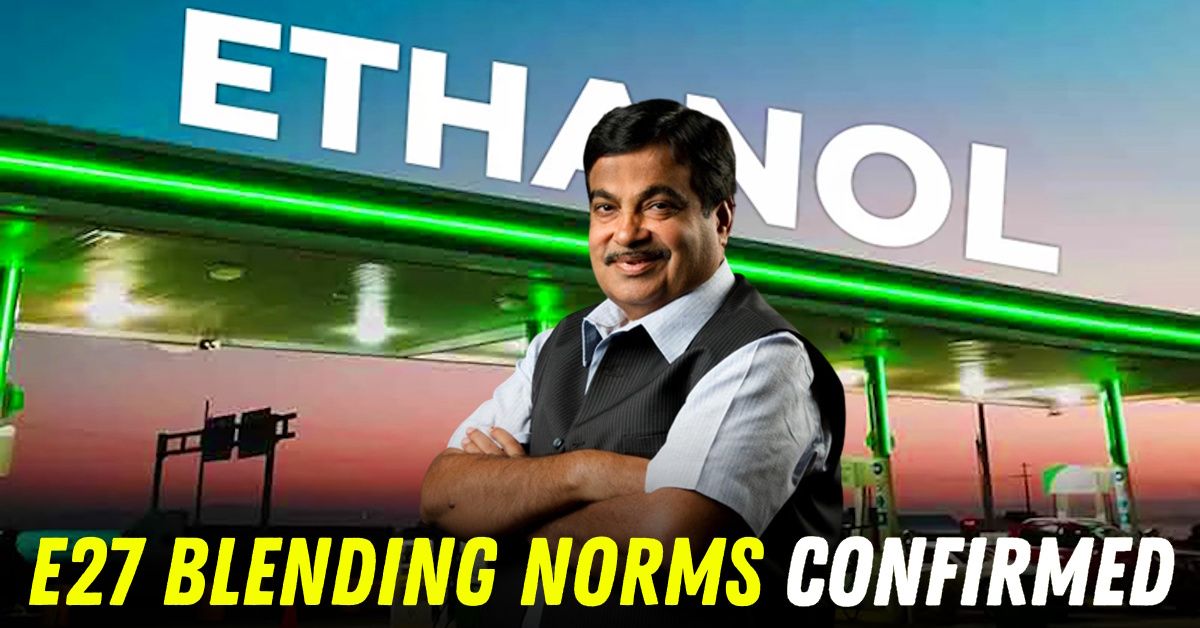Govt’s U-Turn? Gadkari Confirms 27% Ethanol Blending Norms By August 2025


After denying the reports stating that 27 percent ethanol blending in petrol will be implemented in the near future, the Government of India is once again making a U-turn and has now announced that it will be finalizing the norms of 27 percent ethanol blending in petrol (E27) by the end of August this year. This statement was given by the Union Minister of Road Transport and Highways, Nitin Gadkari, at a recent event.
In his most recent statement, Gadkari has stated that the guidelines for the 27 percent ethanol blending in petrol will be finalized by the end of next month. Gadkari stated, “India has already achieved its 20% ethanol blending target. Brazil is running on 27% blend; we will finalize our E27 norms by the end of August.”
For those who may not remember, the target of the Government of India for 20 percent ethanol blending in petrol was by 2030. However, this target was achieved in 2023. Currently, the ethanol blending is at 19.9 percent across the country.
A lot of people at the moment are complaining that the messaging from the government has lately been very confusing. This is because just a few days ago, it was announced by the Petroleum Ministry of India that the reports about E27 blending are “misleading, mischievous, and speculative.” However, now the Minister of Road Transport and Highways has announced that indeed the E27 norms will be finalized next month.
As a result of this, most citizens have highlighted that this has now become a pattern which is being used by the Government of India. They have stated that this method is now being used to implement unpopular and sensitive policies. For those who may not catch on, the government lately has been first leaking an idea.
It then lets the public debate for a while. People share their responses on social media platforms, news agencies organize debates and discussions on these topics, and they also note other general public responses. Soon after noting the reaction from the public, the government officially denies all the reports and ideas to calm the opposition raised by the public.
Finally, despite claiming that none of these “unpopular” policies will be implemented, the government anyway makes them official. What is important to note is that they do not implement it as the media highlights it. They carefully implement it with a “technical loophole,” and they also rephrase the policy as well.
If you still have not understood this method, take the recent two-wheeler toll policy. Initially, a report started floating around in which it was mentioned that two-wheelers will now be required to pay a toll. So naturally, there was a lot of backlash from the public. As a result of this, NHAI (National Highway Authority of India) and Nitin Gadkari denied the reports, calling it “fake news.”
However, soon after this, UPEIDA introduced tolls on the Gorakhpur Link Expressway for two-wheelers. It was highlighted that roads falling under NHAI will not charge two-wheeler tolls. However, roads which do not belong to NHAI can charge tolls for two-wheeler usage. Most likely, the above two policies are not exceptions, and in the future, we will be seeing more of this technique being used by the Government of India.